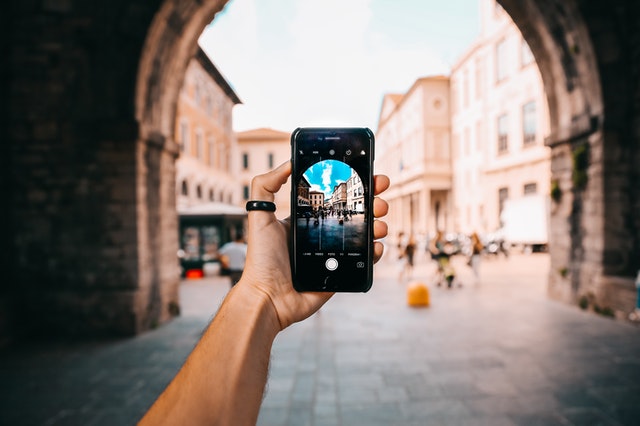
If you’re like most smartphone users, your device is very likely a constant companion throughout your day. But have you ever stopped to think that, by taking your phone with you everywhere, you’re probably keeping it in some places where you shouldn’t?
Read on for a look at common smartphone storage places that are potentially bad for the device, bad for your health, or both.
1. In your pocket.
At first glance, a pocket seems like the ideal place to keep your smartphone, but you should think twice before carrying your device around in your jeans all day. Sitting on your phone (if you keep it in a back pocket) can contribute to back problems such as sciatica, not to mention the fact that it can seriously damage your device.
2. Under your pillow.
If you use your smartphone as your alarm clock, it might seem tempting to keep your device as close to you as possible while you sleep. However, it’s best to avoid keeping your phone under your pillow or, indeed, anywhere in your bed. The blue light that devices like smartphones emit has been shown to disrupt the production of melatonin (the hormone that makes you feel sleepy).
This means that if you’re keeping your phone under your pillow or near the head of the bed, particularly if you have a device whose screen lights up every time it moves, you’re not likely to get as good a night’s sleep as you otherwise might. Finally, although the risk is low, keeping your phone under your pillow could create a potential fire hazard if your device builds up heat during the night.
3. Plugged in.
If you’re not keeping your phone in your bed at night, chances are you’re doing something just as ill-advised: plugging your phone in to charge and leaving it overnight. What you might not realize is that keeping your device plugged in after its battery is fully charged can actually damage the battery itself and impact both its ability to hold a charge and its overall life. This is even more likely to be a problem if you use third-party charging cables rather than the ones specifically recommended for your smartphone type.
4. Right next to your skin.
When you press your phone right against your face while making a call, you may facilitate the transfer of bacteria between the skin on your face, your hands, your phone, and other surfaces your phone and your hands have previously come into contact with. This makes your skin and your phone alike dirtier, and can contribute to further problems such as acne or skin irritation.
Fortunately, avoiding this problem is simple: just use headphones or earpods when calling so that the surface of your phone doesn’t have to be so close to your face. Of course, you should wash your hands regularly. You can also gently wipe down the surface of your phone with a disinfecting wipe, being careful to avoid the ports.
5. In your glove compartment.
The glove compartment of your car seems like a logical place to stash your phone, as it helps keep the device concealed from anyone casually glancing in to see what’s in your vehicle. However, car interiors offer no protection against extreme temperatures, hot and cold alike, which can be very damaging to phones.
This means that if you leave your phone in your glove compartment while your car is parked outside on a hot day, the high internal temperature of your vehicle could cause data loss, battery leakage, or a host of other issues. Similarly, exposing your phone to very cold temperatures could lead to display problems, shortened battery life, or even screen shattering.
6. Loose in a purse or bag.
Tossing your phone loose into a purse or a bag is almost like inviting damage. Depending on what else you’re carrying, the screen could become scratched or cracked. Other sensitive components, such as the camera lens, could also be broken or damaged.
Avoid this problem by using a separate compartment in the bag, such as a zippered side pocket, to carry your phone. If you must carry the phone loose, make sure it is protected with a sturdy case.
7. In your bathroom.
Even if there wasn’t the small, but very real, risk of dropping your phone in the toilet, the fact is that smartphones and bathrooms just don’t mix. Studies have shown that airborne bathroom bacteria can settle on anything within a three-foot range, so if you take your phone into the bathroom, it will almost certainly come out dirtier than it was when it went in.
